
We kindly inform you that, as long as the subject affiliation of our 300.000+ articles is in progress, you might get unsufficient or no results on your third level or second level search. In this case, please broaden your search criteria.

Straipsnyje geografinio paplitimo, kirčiavimo, darybos bei semantikos atžvilgiu nagrinėjami ne visai pilną ypatybės kiekį žymintys būdvardžiai, kirčiuojami pagal 1 ir 2 akcentines paradigmas, daromi iš pamatinių būdvardžių su priešdėliu pa- ir galūne -is. Tokių vedinių Lietuvių kalbos žodyno elektroniniame variante rasta aštuoni. Išnagrinėjus šiuos būdvardžius paaiškėjo, kad jie vartojami šiaurės žemaičių kretingiškių, pietų žemaičių varniškių bei rytų aukštaičių panevėžiškių patarmėse. Tie patys nagrinėjimo būdvardžių darybos tipo vediniai vartojami ir senuosiuose raštuose. Šie vediniai yra vienareikšmiai. Lietuvių kalbos žodyne jie dažniausiai aiškinami sinoniminiu būdu, kiek rečiau - pateikiant nurodą į kitą žodį bei apibrėžiamuoju būdu. Daugumos nagrinėjamųjų būdvardžių reikšmės atitinka pagrindines jų pamatinių žodžių reikšmes.
More...
Straipsnyje keliama hipotezė, kad sakytinėje kalboje neproduktyvių paradigmų fleksijos painiojamos su produktyvių paradigmų fleksijomis, o naujieji skoliniai gauna natūralias, t. y. produktyvių paradigmų, galūnes.
More...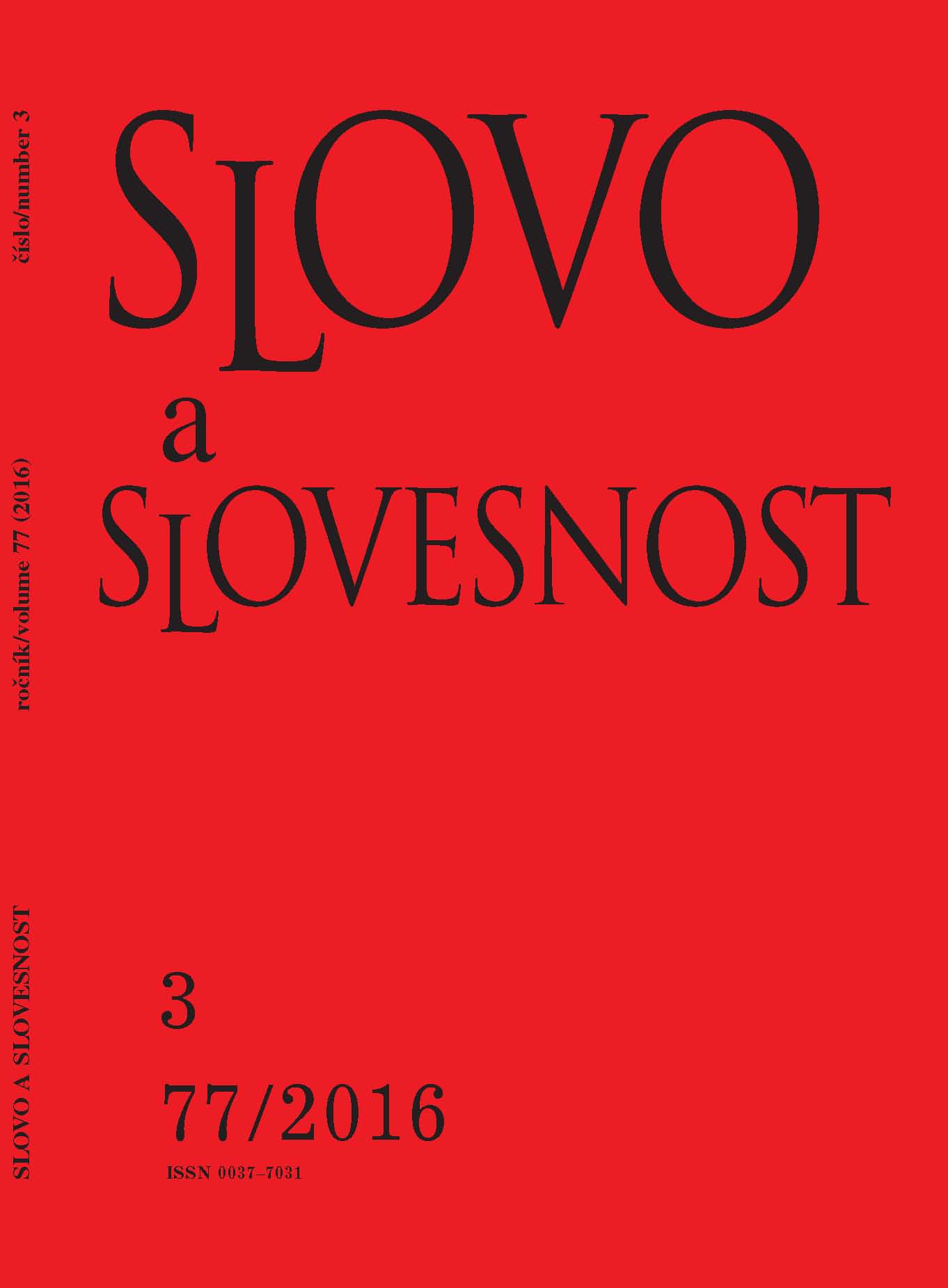
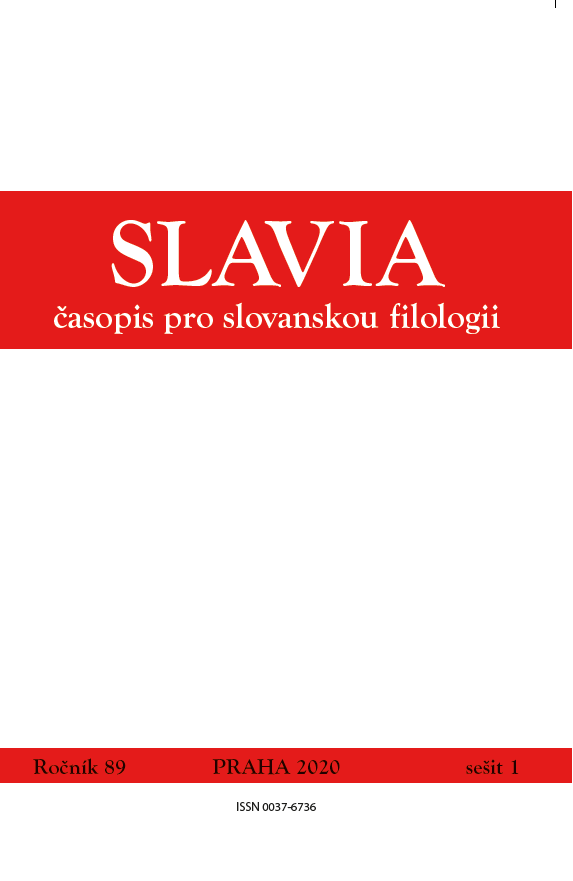
In present-day Czech, the conditional forms of the auxiliary verb být (bych, bys, by, bychom, byste, by) are the only survival of aorist, the original unmarked past tense that (by the end of the 16th century) was superseded by the analytic past tense. Since the personal endings of the conditional forms don’t correspond with the personal endings of other verb forms (hence, we can call them irregular), in nearly all dialects some original aorist forms were replaced by regular forms, particularly in the plural form of the first person (bysme instead of bychom). This paper aims to answer the question to what extent the non-codified form bysme is applied in present-day TV interviews. The examined specimen contains 200 recordings of the Interview ČT24 show.
More...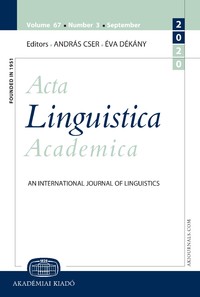
This article addresses some shortcomings in the standard theory of the phonology-morphology interface within Government Phonology, which is built on the dichotomy of analytic/non-analytic morphology. I argue that many cases which had previously been thought to be analytic and therefore to require a cyclic application of phonology should be reinterpreted without: Many constructions that seemed to consist of domains inside domains are better understood without that internal structure. This alternative avoids some contradictory results of the standard model, which incorrectly precludes certain kinds of interactions between the nested domains. The reinterpretation also makes better sense of the phonological shape of (allegedly analytic) affixes by taking into account phonotactic possibilities of clusters with more than three consonants, which had so no far not received a satisfactory analysis in the Government Phonology literature.
More...
This article accounts for the traditionally-labelled Level 1/Level 2 affix distinction in English by combining the predictions of floating segmental structure (e.g. Rubach 1996) and cyclic spell-out by phase (Chomsky 1999; Marantz 2007). It offers insight not only into the different phonological patterns these affixes trigger, but importantly, explains when the same affix will trigger distinct phonological patterns (when an affix behaves sometimes as Level 1 and sometimes as Level 2). It is argued that Level 1 affixes are distinguished by an initial floating vowel in their underlying representations, and that if we combine this with the proposal that affixes that merge directly to roots are interpreted in the same phonological cycle as these roots then we can remove the reference to diacritic notions such as Level 1 and Level 2 from the grammar. This then allows for a fully modular account of English affix classes, where the phonological derivation refers solely to phonological representations.
More...
This paper presents a novel analysis of the stress system of Ichishkiin Sɨnwit (Sahaptian). Ichishkiin Sɨnwit has been previously analyzed as a unique example of a stress system requiring a ranking of the Affix Faithfulness constraints over the Root Faithfulness constraints. I argue, however, that such idiosyncratic stress mechanisms are not necessary. Instead, I propose that accent assignment is cyclic: Underlying accent in the outermost derivational layer within the relevant domain wins. A central role in this analysis belongs to (i) the underlying specification of morphemes for accent, and to (ii) morpho-prosodic domains. The current proposal additionally offers an insight into the role of morpho-prosodic domains in the hiatus resolution strategies.
More...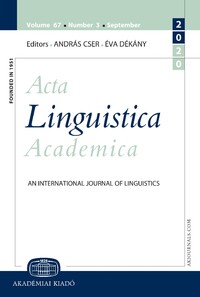
In this paper, it is argued that synthetic compounds based on the passive participle in English fall into two classes, depending on whether they possess the capacity to license modifiers pointing to the presence of the external argument. Compounds such as computer-generated, pencil-drawn or home-made are typically used as eventive and resultative participles, both of which are syntactically agentive. Compounds belonging to this group are contrasted with adjectives such as action-packed, family-oriented, work-related or adult-themed, which are shown to behave syntactically like underived adjectives, with no traces of the external argument. As such, they correspond to the class of stative participles.
More...
The telicity behavior of degree achievements has been a puzzling problem to many linguists. The most successful and currently standard theory (Kennedy & Levin 2008) treats them as degree expressions lexicalizing different types of scales, which in turn influence the resulting evaluative or non-evaluative interpretation. While it may account for English, this theory does not hold up cross-linguistically. We challenge the scalar theory with new Slavic data and show that verbal prefixes influence the (non-)evaluative interpretation of degree achievements more than their underlying scales do. This proposal is formalised as an addition of two type shifters, morphosyntactically realised as prefixes, which, in result, have an evaluative/non-evaluative effect on the given degree achievement.
More...
The present article (Difficulties in Practising Grammatical Analysis) is an applicative component of the theoretical study on preposition, suggests and brings arguments for the importance of the pragmatic-semantic analysis as a main linguistic strategy in understanding correctly this lexical-grammatical class.
More...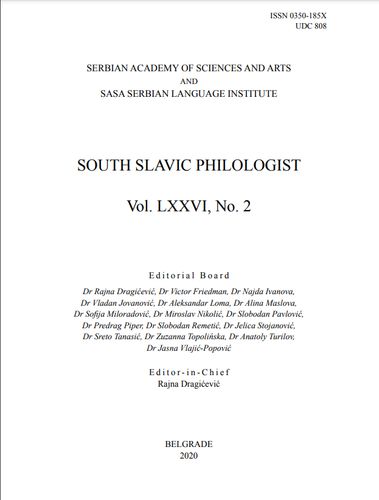
The author supports the thesis that prepositions are an integral part of noun phrases and as such function primarily as grammaticalised exponents of the semantic category of ’space’, and – secondarily – of the semantic categories of ‘source’ and ‘goal’ of an action.
More...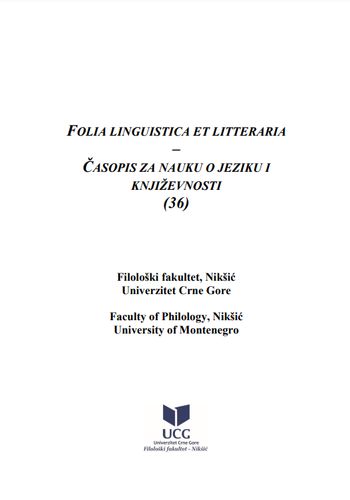
This work will be about the denied predicate and its appearance in the novel Dead and Alive by the Serbian author Ivan Zlatkovic. It has been largely acknowledged in semantics that action sentences denote events, but we want to find out what happens when these sentences are denied. Precisely, we will check whether they denote only the states in that case. It is believed that a negative action phrase presents something that did not happen and that they introduce some sort of negative event. For this, we ask the question of whether it is possible that a negative sentence presents action and can denote an event. Some linguists including Kamp and Reyle (1993) believe that the negative sentences do not describe eventualities but denote facts to which a reference point in time normally cannot be assigned. Since negation often implies a pause in the action, whereby the given possibility is negated and points out the absence of it, our goal is to indicate the occurrence of a negated event by which it still can be stated the existence and happening of the certain action with its own temporal referent depending on its pragmatic environment, that is crucial for our interpretation of the given event. The objective of this article is to describe the problem of negated events and the negation of rupture.
More...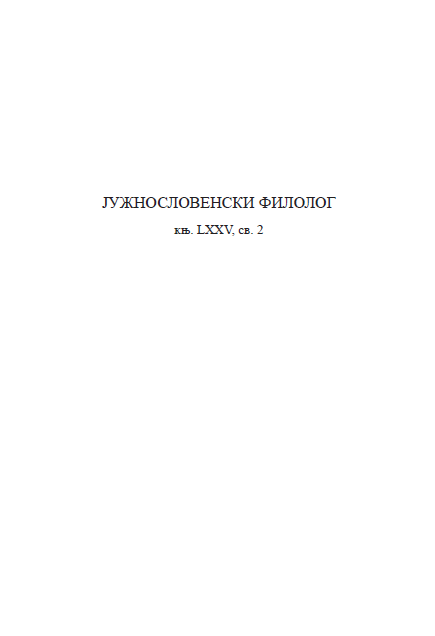
One of the basic criteria when it comes to describing the surface structure of the derivative lexical units is distinguishing morphemic and word-formation analysis. Distinguishing the two types of analysis on the grounds of divisibility and derivation principles in practice makes it possible to avoid mixing up the monoverbal lexical derivatives with non-derivative ones, yet the morphemically divisible units (words) especially when we have formal equality of the individual structural elements. We could distinguish morphemic and word-formation analysis thanks to the usage of approach from form to meaning in order to define the exact number of the wordforming formants in each and every language, including Bulgarian. This is essential to the lexicographic practice when it comes to elaborating various types of wordforming vocabularies, in order to achieve precision and scientific objectiveness in interpreting and presenting the language facts and phenomena.
More...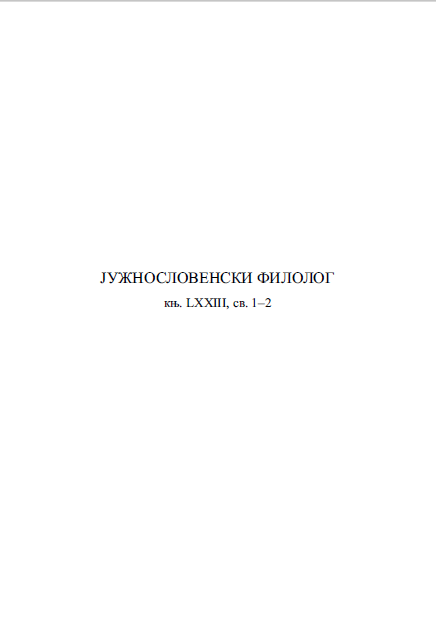
All the volumes of the publication Word-Formation: An International Handbook of the Languages of Europe can be useful to an internationalisation of the discipline of word-formation and can raise new theoretical and methodological questions, finding alternative solutions (including a critical appraisal of certain views or a new evaluation of the existent approaches). In any case, the survey of research published in several countries, foregrounding certain theories and methodologies and their possible limitations by the languages that form its subject-matter, and in general, a broad spectrum of open questions may also be stimulating to a new view of the languages under scrutiny. Besides, those volumes offer an abundance of material for future comparative studies of both theoretical aspects and their application in studying matters of word-formation and usage, also including those based on the material from the languages that are not (closely) related.
More...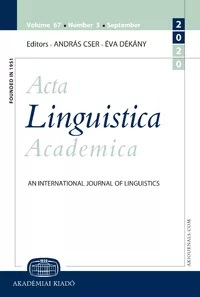
We look at the presuffixal vowels occurring after adjectival and nominal stems in Hungarian. We show that their “low” or “nonlow” status depends not only on the morphological category and arbitrary lexical properties of the stem, but also on its semantic properties and syntactic position, as well as the identity of the suffix and the typical environments in which the suffix occurs. Syntactic positions can be arranged in a scale ranging from more adjectival (less nominal) to less adjectival (more nominal). The same scale may be applied to suffixes typical of these syntactic positions. The lowness of the presuffixal vowels neatly follows these scales, with no variation at the two edges and a zone of variation in the middle of the scale.
More...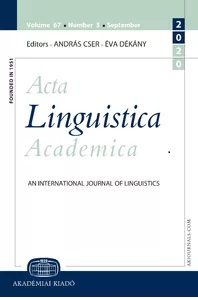
The Word-in-Context corpus, which forms part of the SuperGLUE benchmark dataset, focuses on a specific sense disambiguation task: it has to be decided whether two occurrences of a given target word in two different contexts convey the same meaning or not. Unfortunately, the WiC database exhibits a relatively low consistency in terms of inter-annotator agreement, which implies that the meaning discrimination task is not well defined even for humans. The present paper aims at tackling this problem through anchoring semantic information to observable surface data. For doing so, we have experimented with a graph-based distributional approach, where both sparse and dense adjectival vector representations served as input. According to our expectations the algorithm is able to anchor the semantic information to contextual data, and therefore it is able to provide clear and explicit criteria as to when the same meaning should be assigned to the occurrences. Moreover, since this method does not rely on any external knowledge base, it should be suitable for any low- or medium-resourced language
More...
Recognition of Hungarian conversational telephone speech is challenging due to the informal style and morphological richness of the language. Neural Network Language Models (NNLMs) can provide remedy for the high perplexity of the task; however, their high complexity makes them very difficult to apply in the first (single) pass of an online system. Recent studies showed that a considerable part of the knowledge of NNLMs can be transferred to traditional n-grams by using neural text generation based data augmentation. Data augmentation with NNLMs works well for isolating languages; however, we show that it causes a vocabulary explosion in a morphologically rich language. Therefore, we propose a new, morphology aware neural text augmentation method, where we retokenize the generated text into statistically derived subwords. We compare the performance of word-based and subword-based data augmentation techniques with recurrent and Transformer language models and show that subword-based methods can significantly improve the Word Error Rate (WER) while greatly reducing vocabulary size and memory requirements. Combining subword-based modeling and neural language model-based data augmentation, we were able to achieve 11% relative WER reduction and preserve real-time operation of our conversational telephone speech recognition system. Finally, we also demonstrate that subword-based neural text augmentation outperforms the word-based approach not only in terms of overall WER but also in recognition of Out-of-Vocabulary (OOV) words.
More...